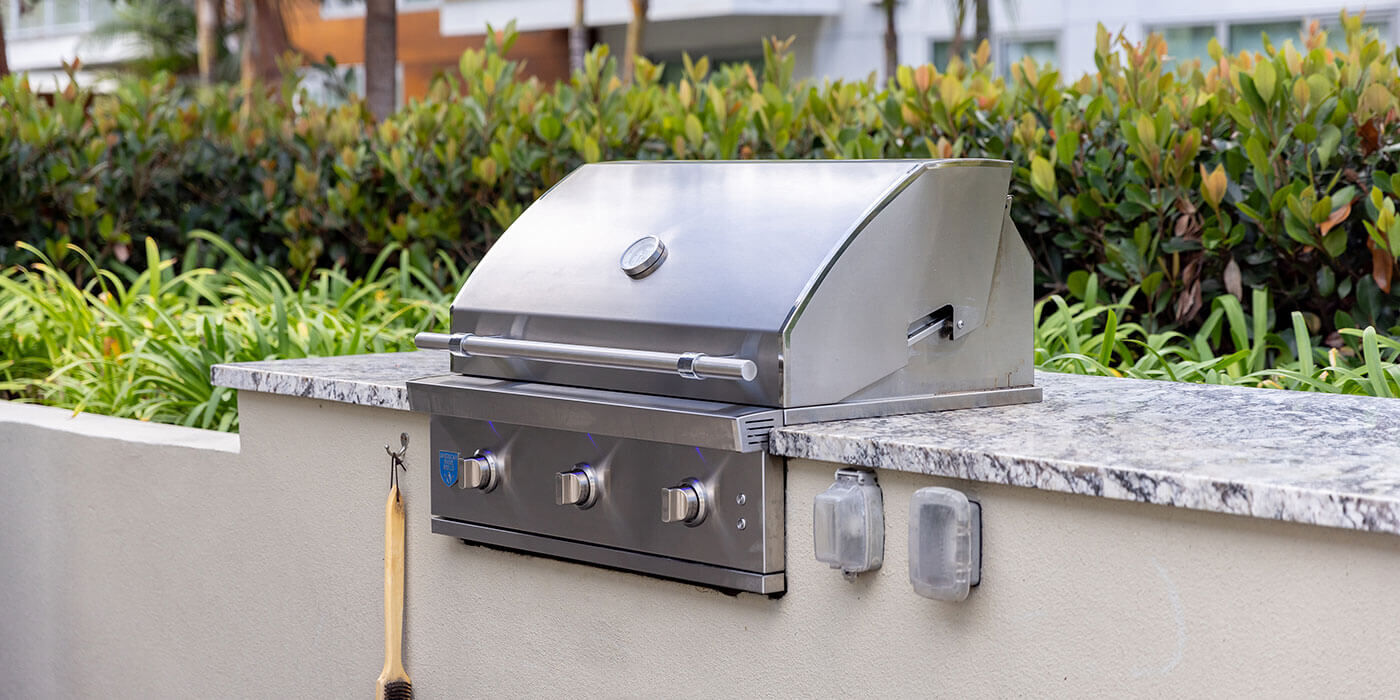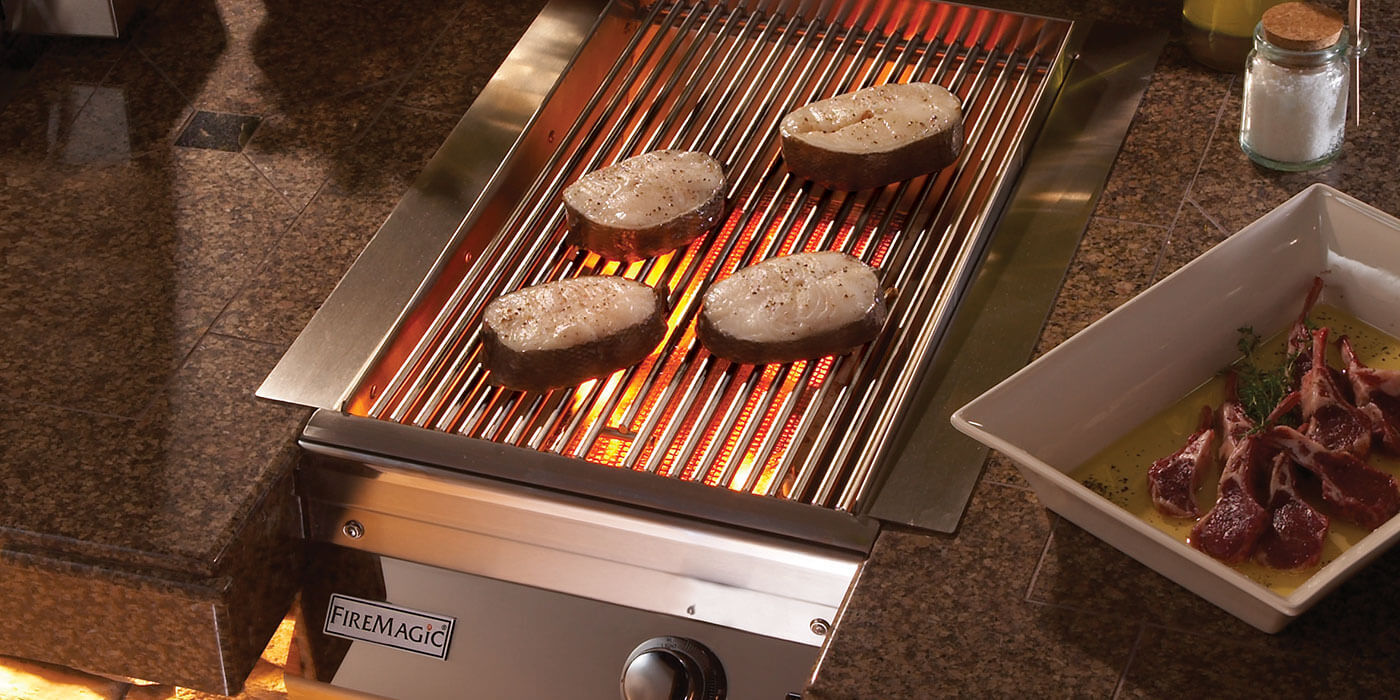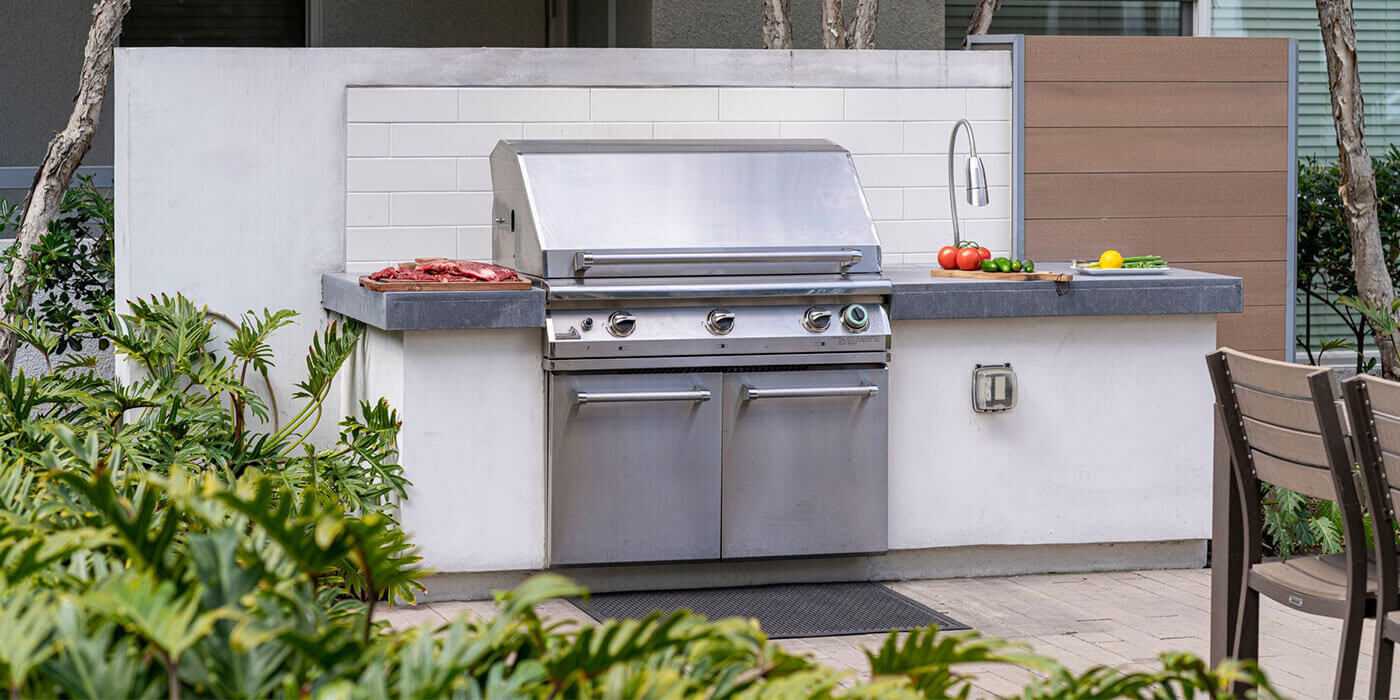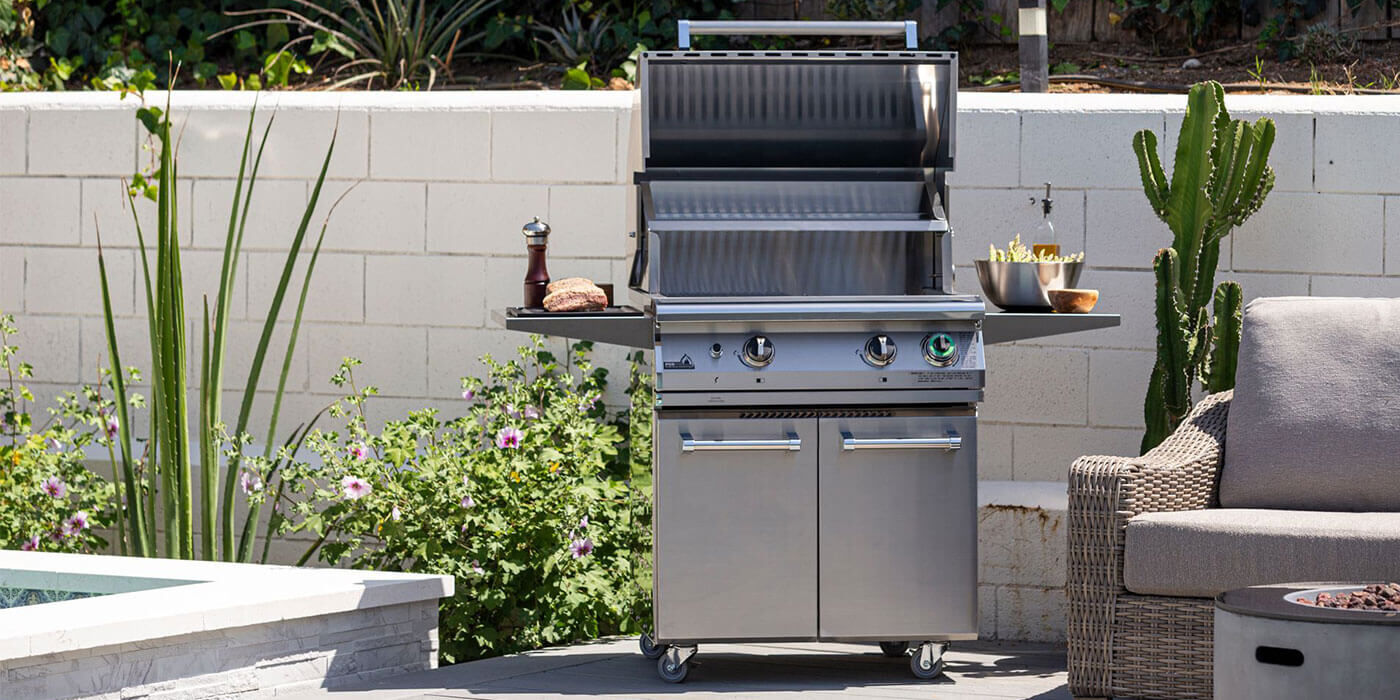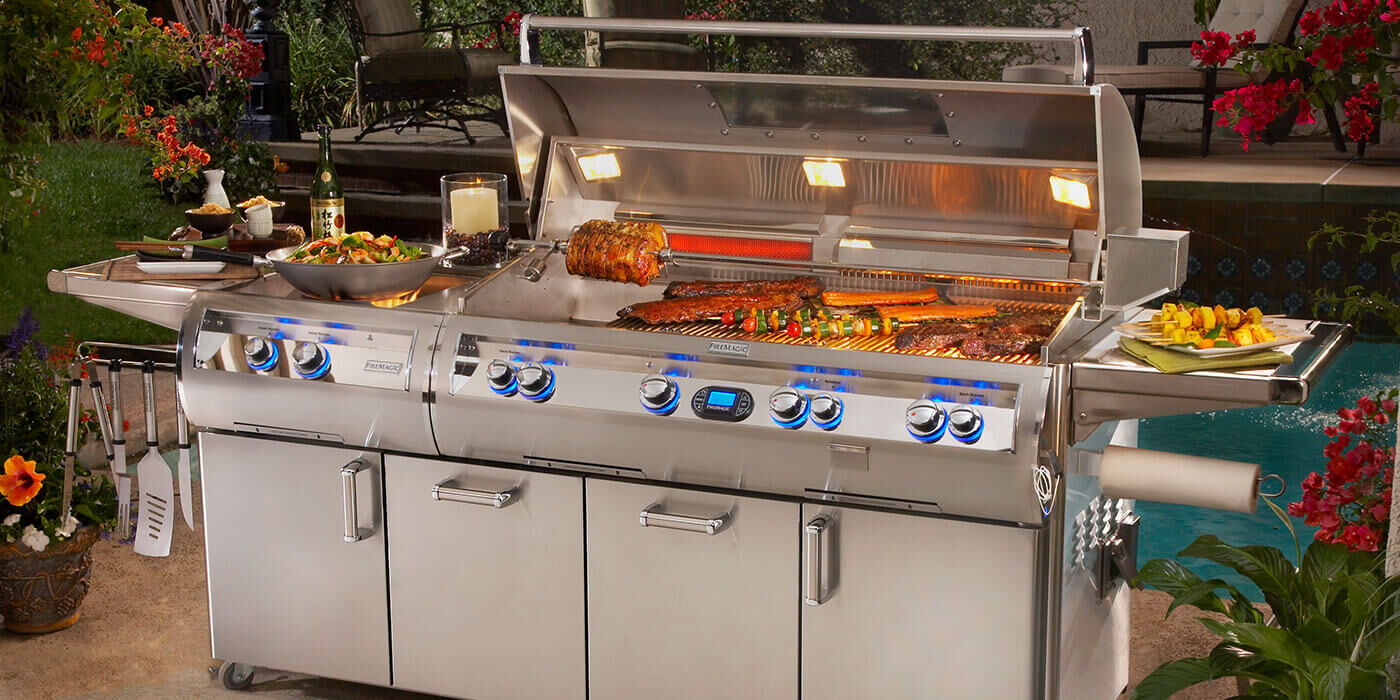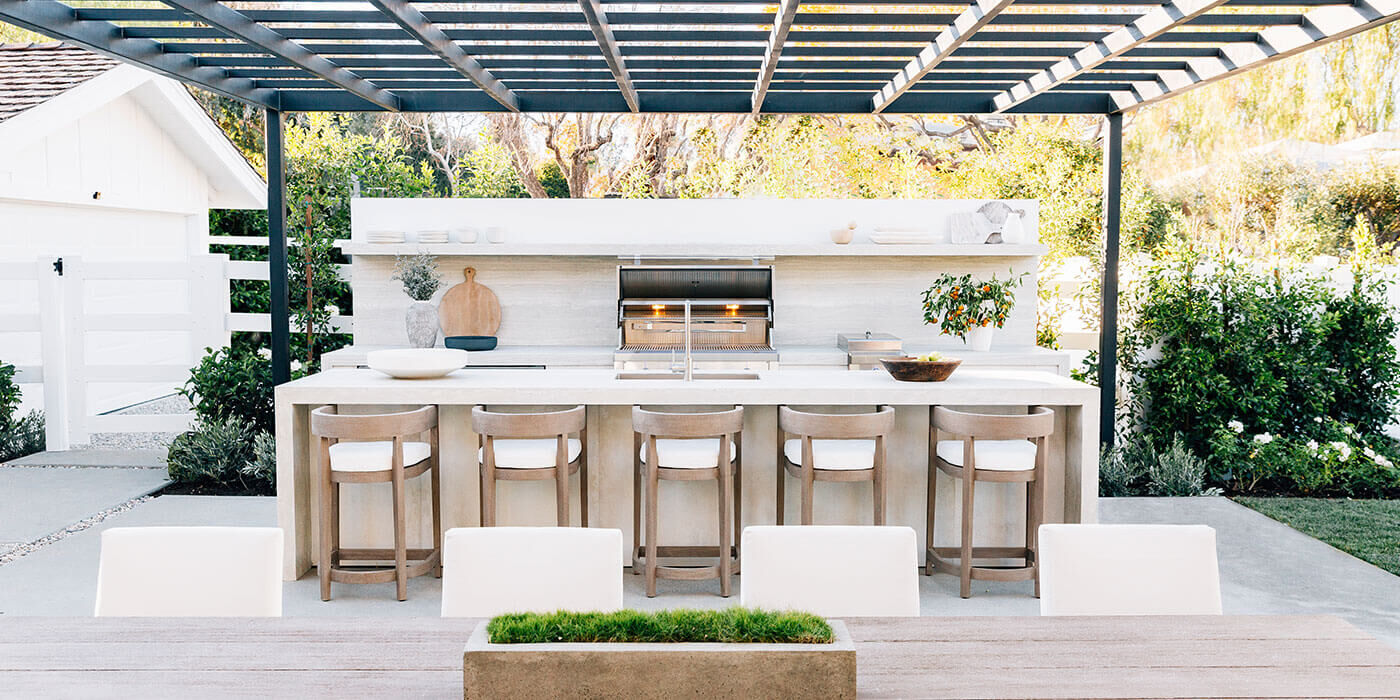By: Thomas Kearney, NFI Certified Master Hearth Professional
Last Updated: August 28, 2024
If you’re in the market for a new grill, then you probably know what a challenge it can be to narrow down the best options. You have so many models to choose from, each with unique features and optional add-ons to suit specific cooking styles.
To make your shopping journey easier, we’ve outlined the top seven things you’ll need to consider before deciding on a grill.
#1 What Features Do You Want?
You can find a wide variety of components and appliances to make cooking more convenient. Consider what kind of meals you want to make, so you can find a grill with all the features you need to get the job done.
Side Burners
Side burners are an excellent addition to any gas or hybrid grill. They're gas-powered cooking surfaces that attach to the side of your grill.
Available in single and double configurations, side burners let you prepare multiple courses at once or simmer sauces. They have a separate flame than your main grate and come with temperature control knobs, so you can precisely adjust the heat.
Infrared Burners
Infrared burners reach incredibly high temperatures for searing steaks and quickly warming up sauces. They use radiant heat, which heats the food directly, instead of heating the air, like traditional, convection-style systems.
Infrared burners also provide an evenly heated cooking surface and reduce flare-ups caused by grease and food particles.
Power Burners
Like high-pressure burners, power burners create more heat than standard gas side burners, letting you boil and steam your meals.
You’ll also be able to remove the center piece of your power burner to accommodate large pots, pans, and woks.
Safety Features
Some grills come with built-in safety features, offering extra peace of mind for you and your guests.
T-Series Grills from PGS have automatic shutoff timers that turn off the gas supply after an hour of inactivity, ensuring your grill is never left on by accident. These models are handy in busy commercial settings, where customer safety is a priority.
#2 What Kind of Food Do You Want to Cook?
Are you a fan of slow-cooking or flavor-infusion? Then a charcoal or pellet grill is your best bet! If you like quick searing and extra juicy steaks, search for a gas grill that has a high-temperature infrared burner.
You can also choose a hybrid model, which uses charcoal, pellet, wood, and gas fuels. That means, you get both flavor and user-friendly operation. Some hybrid units have separate fireboxes that you can use at the same time. Other models make it easy to swap fuel types whenever you'd like.
Check out our Grill Buying Guide for in-depth information on each available style.
#3 How Do You Want to Light Your Grill?
If you choose a charcoal grill, you’ll light it manually. While charcoal grills create incredible flavor, it takes them longer to warm up than gas models. If you host a party, you'll have to plan your mealtime in advance and make sure your grill is ready to go when your guests get hungry.
Gas grills have built-in ignition systems that provide immediate warmth. Instead of lighting by hand, you’ll simply press a button or turn a knob to switch it on and off. With instant heat and adjustable temperate settings, gas models are the best choice for those who anticipate large gatherings.
With a gas grill, you can choose from a few different ignition systems. These include match-lit, hot surface ignition, flame thrower, continuous spark, and single spark.
Match-lit
You'll ignite a match-lit burner by hand using a lighter or match after you turn on your fuel source.
Hot Surface
Hot surface ignitors have a heating element that relies on electricity to warm up, just like an electric stove. You’ll need a supply of electricity in your outdoor space for your hot surface ignition to operate.
Flame Thrower
Flame Thrower ignitions feature a piezoelectric ignitor that provides a constant stream of fuel for the burner. Piezo ignitors don’t require an electrical connection.
Continuous Spark
In a continuous spark ignition system, electrodes and ignition rods (placed near the burner) generate constant sparks. With this ignition type, you'll need batteries or a supply of electricity in your outdoor space.
Single Spark
Single spark ignitions emit one spark using a piezoelectric ignitor, instead of constant sparks. They don't require an external power source.
#4 How Much Cooking Space Do You Need?
Grills are available in every size imaginable, from tiny, tabletop units to extra-large, eight-burner models. To find the right size, first ask yourself: Are you a casual griller who prepares food for a small household, or do you like to cook for a crowd?
If you prefer to make simple meals for four or less people, a small, two-burner grill will do the job. These compact models typically have a 400-500 sq. in. cooking surface.
To experiment with different cooking methods, look for a medium-sized grill that has up to four burners and a 500-600 sq. in. cooking surface. With more cooking space, your grill can accommodate more than one heating zone, so you can simultaneously sear, simmer, and warm-up your food.
Prepare multi-course meals for a crowd with a large or extra-large grill. These models usually come with luxurious upgrades, like side burners, rotisserie kits, LED lighting, and storage components.
Large units have more than four burners and a 600-700 sq. in. cooking surface, while extra-large units have up to eight burners and an 800-1,000 sq. in. cooking surface.
#5 Do You Need Extra Storage?
Typically, two access doors underneath your grill hide a storage area that houses your Propane tank and drip tray.
If you're building an outdoor kitchen island, you can incorporate a variety of storage options. Some of the most popular components include an outdoor refrigerator, beverage center, trash receptacles, drawers, and condiment trays. You can also create a designated entertainment area, complete with bar, sink, and outdoor TV.
If you're only looking to store basic items, like utensils and ingredients, consider a grill cart. Some carts directly attach to your grill, while others serve as separate prep stations. Either way, you’ll have more room to cook, store your accessories, and present your side dishes, condiments, and drinks.
#6 What Is Your Budget?
How often do you plan to cook and what kind of climate do you live in? You might have to find a grill made of a specific material to withstand the weather conditions in your area.
If you grill often, you'll need a reliable stainless steel unit that stands the test of time. These models will cost a bit more upfront, but they’re rust-resistant, durable, and easy to clean, making them well worth the investment.
Simple grills made of aluminum, metal, and cast iron are ideal for homeowners who only barbeque occasionally. However, these models won't last long with frequent or long-term use. They also don't stand up to harsh weather, especially in humid, coastal climates. If you do opt for a more inexpensive grill, make sure you have a place to store it when you're not using it.
We also recommend looking for a grill with a dual layer or double-lined hood. This helps trap all the heat inside for more efficient cooking.
#7 How Do You Maintain Your Grill?
Whether you purchase a gas or charcoal grill, you'll need to follow a few simple maintenance steps to keep it in great working condition.
Charcoal Grills
After cooking on your charcoal grill, wipe down the inside of the lid while it’s still warm to remove any grease splatters. Then, wait for the ashes and used charcoal chunks to cool off and dump them out of the ash receptacle and charcoal tray. Consider keeping an ash bucket handy in your cooking space to make the clean-up process more convenient.
Every couple of weeks, we recommend cleaning your grill thoroughly, inside and out. Remove the grates and soak them in warm, soapy water. Then, use a grill brush to clean off any residue. After you let your grates dry, re-oil them to prevent rusting.
Purchase a fitted, weatherproof cover for your charcoal grill to protect it during the off season.
Gas Grills
Before each cooking session, preheat your gas grill completely to clean and disinfect the surface.
After grilling, turn up the heat and burn off any drippings and grease left behind on the grates. You’ll also want to use a brush to scrape off stubborn food scraps. This ensures a clean surface when you’re ready to cook again.
To get the best performance from your grill, clean the inside and outside with warm, soapy water every other week. Remember to empty the grease from your drip tray, too. If left unchecked, the extra grease could cause a fire hazard.
When the season ends and you're ready to close your outdoor kitchen, thoroughly clean your grill from top to bottom, inside and outside. Then, move it into storage with the Propane tank or gas line disconnected.
Protect your grill during the off-season with a weatherproof cover made of breathable material, such as polyester. If you live in a humid climate or near the ocean, only cover your grill during periods of harsh weather. Leaving it covered for a long stretch of time can trap salty or moist air inside and cause it to rust.
We're Here to Help
Have more questions about grills? Call our team of NFI Certified experts today at 800.919.1904.
More Resources
Looking for more information on the types of grills available? Check out our Grill Buying Guide.
Discover six important considerations you’ll need to make before building an outdoor kitchen.
Effortlessly create the outdoor cooking space of your dreams with a ready-to-finish outdoor kitchen.
 |
Tom Kearney has been a Technical Sales Representative at Woodland Direct for over a decade, where he has honed his expertise in gas, wood, and pellet appliances as an NFI-Certified expert. Tom's dedication to customer satisfaction is exemplified by his work with high-profile clients, including assisting SpaceX President Gwynne Shotwell in sourcing five stunning fireplaces for her Texas home. When he's not helping clients find their perfect fireplace, Tom enjoys hitting the golf course, skiing down snowy slopes, and exploring new trails on his bike. Call him or one of our experts in fire at 800.919.1904. |
